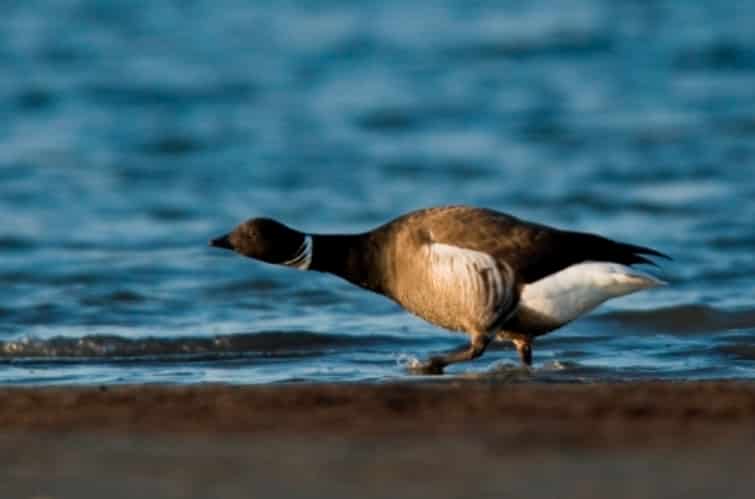
(Juneau) — Waterfowl hunting season opens September 1 over much of Alaska and several regulations changes—including increases to daily bag limits for canvasbacks, snow geese, and brant—spell good news for duck and goose hunters this fall:
- Beginning September 1, canvasback limits statewide will increase from one to two birds per day, six in possession. The bag limit bump comes after 2016 breeding population estimates were determined to be 26 percent greater than the long-term average of the last 50 years. Canvasback populations in North America have increased recently to more than 725,000 birds.
- The bag limits for “light” geese (snow and Ross’ geese) increase statewide this season from four to six birds per day, 18 in possession. Breeding surveys of light geese in the western Arctic, including on Alaska’s Arctic Coastal Plain, indicate these populations are increasing and have potential to reach undesirable population levels. The harvest increase is not expected to significantly reduce these populations.
- Statewide bag limits for brant will increase from two to three birds, nine in possession. The 2016 winter brant survey counted 140,000 birds. An increased harvest was approved by the Pacific Flyway Council as part of a cooperative harvest strategy when the population exceeded 135,000 birds
Waterfowl hunters are reminded that amendments last year to the federal Migratory Bird Hunting and Conservation Stamp Act raised the price of federal waterfowl stamps from $15 to $25 and redefined which hunters must have a federal stamp to hunt waterfowl. All waterfowl hunters 16 years of age or older must have a current federal Migratory Bird Hunting Stamp; exceptions include those who are permanent rural residents of an “included area” or permanent rural residents eligible for subsistence under the Alaska National Interest Lands Conservation Act. “Included areas” are those areas where spring/summer migratory bird subsistence harvest is currently legal. Included areas and subsistence harvest regulations can be found at: https://www.fws.gov/alaska/ambcc/Regulations.htm .[xyz-ihs snippet=”adsense-body-ad”]
For questions or clarifications, please contact the USFWS Office of Law Enforcement at (907) 786-3311.
A reminder to Palmer Hay Flats hunters: Hunters who plan to visit Southcentral Alaska’s popular Palmer Hay Flats State Game Refuge near Wasilla should be aware of a regional restriction to ATV use on the Cottonwood Creek ATV trail. All but the first mile of the ATV trail will remain closed to motorized vehicles through the fall season as the Alaska Department of Fish and Game works to protect wetlands and mitigate damage caused by expanding tidal guts and ATVs. The closure will affect waterfowl hunters and other recreationists who use ATVs to access remote portions of the refuge via the 6.5-mile-long trail.
Hunters, keep it clean: Waterfowl hunters are reminded that in 2015 several strains of avian influenza were detected in waterfowl in the Lower 48. None of these strains were transmitted to people. Although highly pathogenic avian flu has not been detected in Alaska, hunters should be aware that wildlife can carry pathogens of many kinds. As always, waterfowl hunters are advised to practice routine hygiene when handling, cleaning and cooking wild game. The Department of Fish and Game recommends the following:
- Do not handle or eat obviously sick game.
- Wear rubber or disposable latex gloves while handling and cleaning game.
- Wash hands and thoroughly clean knives, equipment and surfaces that come into contact with game.
- Do not eat, drink or smoke while handling animals.
- All game should be thoroughly cooked (meat internal temperature of 165° F).
Monitoring for avian flu is ongoing in Alaska and early-season waterfowl hunters in the Cook Inlet region may encounter field technicians seeking samples. For more information, contact ADF&G Wildlife Health and Disease Surveillance Program, phone: (907) 328-8354, or email: dfg.dwc.vet@alaska.gov .
The Alaska 2016-2017 Migratory Bird Hunting Regulations Summary is available online athttps://www.adfg.alaska.gov/index.cfm?adfg=hunting.huntingregulations .
Source: ADF&G
[xyz-ihs snippet=”Adversal-468×60″]







